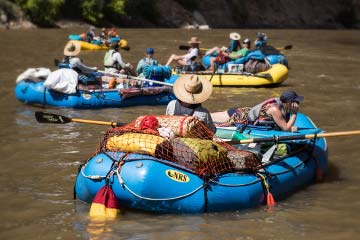Packing for International Paddling
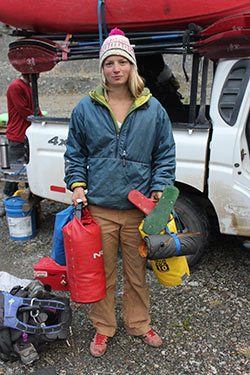 Heading out the door for a big expedition or international trip and leaving the gear closet behind for months at a time can be a bit daunting. If you’re like me, it’s a little intimidating staring down at two empty bags, one to check and a carry on, and asking yourself… “Now, Self, what will you be needing for the next 1–3 months of your life?”
Heading out the door for a big expedition or international trip and leaving the gear closet behind for months at a time can be a bit daunting. If you’re like me, it’s a little intimidating staring down at two empty bags, one to check and a carry on, and asking yourself… “Now, Self, what will you be needing for the next 1–3 months of your life?”
I have done a few international trips. All have involved kayaking or rafting in one way or another. Sometimes I’ve gone to the Chilean Patagonia to guide for 4–5 months at a time. Other times, I’ve dipped south of the border for just enough time to get my paddling fix; down where the tacos flow like water and cervezas are the safest option for hydration.
Back to the original question, what are the “must haves” for an international trip, along with a few that are just nice to bring along?
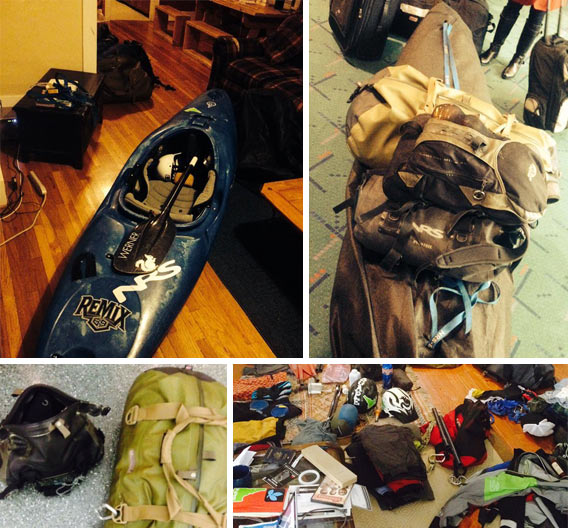
Whether I am fleeing the country for weeks or months, these are some things that I always throw on the packing list.
Sleeping Gear
30°F Bag/Compact Sleeping Pad/Light Shelter (bug dependent)
- You never know where you might end up or when you might get stranded atop a high Peruvian pass with two blown bus tires. I like taking a down bag; it packs down small, weighs almost nothing and if it gets really cold, I put on all of the layers within reach and hunker down. I spent most nights on the Rio Bravo like this.
- Find a ground tarp to save your sleeping pad. I use a Therm-A-Rest NeoAir XLite Pad. With some luck and ground-tarp diligence, it has survived three years of brutality.
- If you’re headed to New Zealand or Peru, where the sand flies can devour a human being within hours, take a fully enclosed structure. Some companies make extremely light tents that pack down to the size of a softball. For less buggy trips, consider an even lighter set up. In India, we used an NRS River Wing that slept four, and kept us safe from the dew and precipitation found in the Himalayan jungles. Using paddles to erect the structure is a whiz and helps to cut down on the hassle of poles.
Layering
- I always try to pack non-cotton base layer items, ones that with a few exceptions can be used on or off the water. This keeps my bag lighter and my layers more versatile. When was the last time you wore a cotton shirt under a drytop in a glacial river? However, bring something comfy for the ride and the celebratory drink after a big day on the water. I have learned that it’s always worth bringing your favorite pair of pants. You can always buy a cotton t-shirt, no matter where you’re going, and it’s a great memento to bring home.
- Synthetic or wool, you can’t go wrong, unless the layer you choose smells like death after only one day of wearing it (whatever you do, don’t wear this out to the bar). I think about the climate/water temps when I am rifling through the clothes drawer. I grab the Magic-8-Ball and try to predict what I need to have in my gear bag one month from now. “Magic-8-Ball, will a surprise tsunami hit my location?” I suggest at least two long sleeve layers, one thick, one thin for warmer or chillier days. And some wool or synthetic leggings for drysuit days.
Sunglasses (2 Pair)
- I cannot count the number of times that I or my friends have used my spare pair of sunglasses. These are a must for any trip. I’ve even used sunglasses to barter for a new pair of 5.10 Canyoneer Boots.
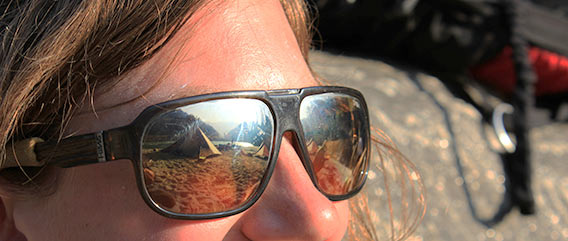
HydroSkin Pants
- Scouts honor, these things have saved my life from those sand flies with lobster-claw mandibles. They are also a nice layer to have when it’s not quite cold enough for a drysuit, but having a little insulation is fine. Also, if you’re like me and swim over rock ledges sometimes, these add some nice padding and flotation. I think these pants should be credited with the fact that I still possess a kneecap.
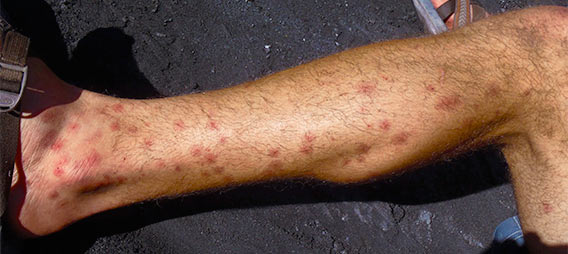
Swim Trunks (stretchy)
- This is also going to double as your cruising wear, so get zippered pockets to keep your pesos safe.
HydroSkin Socks
- Keep those toes warm and the ankle-biters from biting. Although I had not been using HydroSkin Socks in Nepal, after I lacerated my toe I was glad my buddy had a pair. I cleaned the wound in the morning, taped the sock closed while paddling to keep water out and cleaned the wound in the evening. No infection. If nothing else, it’s nice to have a semi-clean booty to drink from after going for a unintended swim.
Comfy Clothes
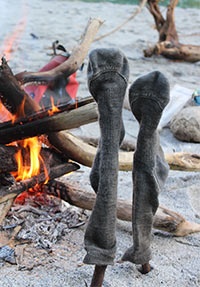 When packing for a trip that is heading in the direction of whitewater, it’s easy to forget about transit time, getting to and from the river. These are the times that the body heals after grueling jungle missions or hikes out of deep desert canyons. I recommend grabbing some choice comfy clothes. If you can splurge on the space, it’s nice to change into something comfy in camp. Keep in mind that it can be difficult to get clothes washed in some places, so you might consider leaving that 1980s polypro behind. Stinky!
When packing for a trip that is heading in the direction of whitewater, it’s easy to forget about transit time, getting to and from the river. These are the times that the body heals after grueling jungle missions or hikes out of deep desert canyons. I recommend grabbing some choice comfy clothes. If you can splurge on the space, it’s nice to change into something comfy in camp. Keep in mind that it can be difficult to get clothes washed in some places, so you might consider leaving that 1980s polypro behind. Stinky!
- Pair of old comfy Jeans (yeah, they add some weight, but it’s SO worth it.) Max Lawrence always brings his Carharrts on the river… always.
- Pair of lightweight/quick drying shorts (Prana MoJos are my favorite): They are comfy, light and 100% polyester.
- T-shirt (or 2), maybe substitute a tank top for those sunny days, depending on your level of “bro-status.”
- Thin wool socks (2 pair), you can always double down.
- Comfy lightweight hoodie
Lightweight insulating layer, like the Patagonia Nano Puff®
- It packs down to nothing. Even in Mexico, it dropped into the 30s. A lightweight synthetic puffy layer can be worn on chilly nights like this, or under a drysuit on freezing Southern Patagonian trips. It’s like paddling without having to leave the comfort of the sleeping bag. I stress synthetic on this. If down gets wet, it stays wet and sucks warmth from the body.
Lightweight Rain Jacket
- Some people argue that a dry top will suffice for a rain jacket. In my experience, when it starts to dump, it’s rare to find someone that wants to don a soggy drytop with rubber gaskets, post paddle. Even during overnight self-support trips, I stuff my rain jacket into the bottom of a dry bag. I’ve never regretted it, even if I didn’t use it.
When packing up, I try to save as much space and organize as much as possible. I use this folding technique to save space and keep the headache down when sorting through the black hole of the duffel bag. If you do it right, you can use your shirts to play catch with.

- Fold the lower four inches of the shirt behind itself.
- Fold the shirt vertically into thirds.
- Roll the shirt from the neck to the waist.
- Pull the pouch on the backside to the front, over the newly made roll.
Presto! You have a tightly rolled garment that will save space and won’t clutter up your duffel.
Footwear
Shoes are clunky and awkward, so choose wisely.
- Boat/Town shoes Depending on the type of paddling and traveling I’ll be doing, I’ll grab some expedition-style footwear as well as some “kickin-it” shoes. There are a couple of companies out there that are producing products that perform well on both slick portages and greasy dance floors. The Astral Brewers are quick-drying favorites that are as comfy to wear on the plane as they are in the boat. High tops are definitely the most secure. If you will be schlepping miles through dense forest riddled with mud puddles and cow flops, I’d recommend high-tops. (Word on the street is, NRS is in the works of producing a bomber set of low/high tops to fill the same niche. Shhhhhh. Don’t let them know I said anything.)
- Sandals Always, Always, throw in a pair of Chaco flip flops.
- Muck Boots (optional) When heading to the Futaleufu to guide for months at a time, I throw a pair of muck boots in to combat the wet/clammy weeks of rain. They are unwieldy in the bag, but worth it if you’ll be posted up for awhile. If you don’t want to bring them home, they’re easier to offload than a crate of moonshine during prohibition.
We’re nearly packed up at this point!
Boating Gear
These are all the mandatory pieces that will be difficult to get your hands on once you leave the country. Head to foot
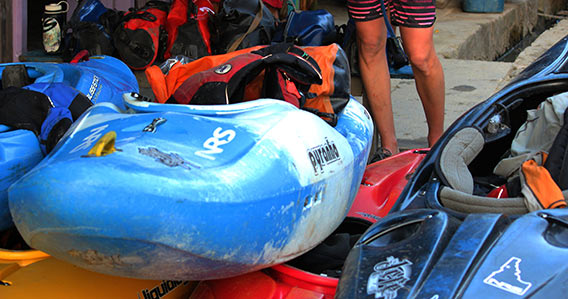
Helmet
- To full-face or not to full-face? When heading to the land of waterfalls and basalt for three weeks, knowing that I would be taking some mandatory big hits, I commit to the full-face. If I am heading into expedition-style trips or big water rivers, I take my half-cut. It’s easier to communicate, whistle, eat snacks and breathe without a jaw piece. However, you sacrifice a little money-maker protection. Lots of Rocks = Full-Face. Big Water = Half-Cut. Be sure to pack the void space of your helmet with soft goods to utilize bag space.
Drytop and Drysuit
- This is when knowing the average climate of a given destination is clutch. If I have the choice, I take both. If there are more chilly days than not, the drysuit is the choice. If it’s hot out, wear those thin layers. A wise person on the Middle Fork Salmon once said to me, “If you’re too hot while you’re out on the river, than you must be pretty stupid.” In other words, you can always roll or jump in the water to mitigate the heat. If you have the luxury, take a drytop as well. I mostly wear drytops when I am on the Futalufu; however, when week two of the torrential downpour comes, I am so happy to be in a drysuit.
Life Jacket
- Enough Said. This is the most cumbersome item of all. I pack it on the bottom of my bag or, if I’m flying a boat, I stuff it in the stern. Pack all of your safety equipment: rescue knife, pulleys, carabiners, etc, in your PFD and pack it in the checked bag. It’s a sad day when that Leatherman that your deceased grandma gave you for your 11th birthday gets confiscated by airport security. Dang it!
- If space will absolutely not allow a PFD to get packed in the bag, I have heard of people wearing their life jackets onto the plane. In this scenario, be sure to remove all of the hardware and have a good story for security as to why you’re wearing a parachute before getting on the plane.
Sprayskirt
- If kayaking is the destination.
Time to Dial in the Little Things
- Elbow Pads
- Hardware:
- 3 locking carabiners (enough for a z-drag)
- 2 small pulleys
- 2 prusiks
- 15 feet of 1/2" webbing: This is super convenient for storing in the front pouch of the PFD. It can be used to set anchors, make a backpack system or harness, lower boats down sketchy inclines and can be used for an emergency throw line if your buddy is getting beat in a hole just off the shore. The possibilities are endless.
- Tow Tether
- Throw Bag: Don’t be the idiot that forgets to bring a throw bag. If you can, bring a waist bag as well.
- Rescue knife
- Multi-Tool
- Parachute cord (30'): Because you never know
- Ear Plugs
Extras
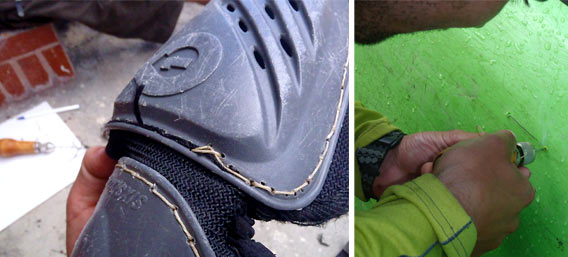
- Speedy Stitcher sewing awl Throw this one into first aid. It is an amazing repair tool that blows just about everyone away when you bust it out of the bag of surprises. It can be used to repair shoes, sandals, elbow pads, PFDs, you name it! I have also heated up the thick gauge needle to punch a hole through my kayak hull to keep a crack from propagating.
- Bitchathane (more correctly Bituthene) / Roofing tar paper If you are going on an international paddling trip or simply a trip into the backcountry, throw in a roll of Bitchathane from the hardware store. It is an amazing patching material when you find yourself between a rock and a nasty hike out.
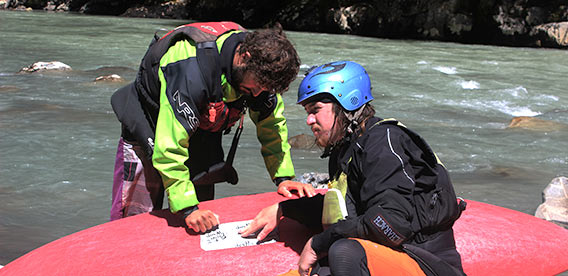
- An extensive first aid kit
- Headlamps (2) w/extra batteries Always bring two. I use the Black Diamond Storm. It is powerful, waterproof to three feet, has multiple settings and a switch locking option so it doesn’t turn on inside your dry bag.
- Entertainment I always bring an iPod (in a waterproof case) with lots of books on tape, podcasts and plenty of new music. Planes, trains and automobile travel gets pretty dull. If I have the room, I will throw in some small waterproof speakers for camp morale boosting and if I’m feeling studious, a big book. If your crew is keen, bring a cribbage board and cards (or the like) to keep the competitive spirit alive. It eats up hours of travel time.
- Camera Waterproof if possible, to capture the moment.
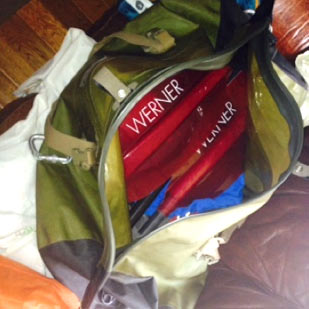 Breakdown Paddle Never leave home without it. A 4-piece fits perfectly in the bag. During a stint in Mexico, I had two weeks of being in-country before I ever touched whitewater. I didn’t want to tote a kayak paddle around this whole time, so I opted for using two breakdown paddles, one for primary usage and the other for a spare. They both fit perfectly in the bottom of my Watershed Colorado Duffel. I ran through two weeks of Mexican waterfalls and steep creeks with no paddle issues.
Breakdown Paddle Never leave home without it. A 4-piece fits perfectly in the bag. During a stint in Mexico, I had two weeks of being in-country before I ever touched whitewater. I didn’t want to tote a kayak paddle around this whole time, so I opted for using two breakdown paddles, one for primary usage and the other for a spare. They both fit perfectly in the bottom of my Watershed Colorado Duffel. I ran through two weeks of Mexican waterfalls and steep creeks with no paddle issues.
This is the meat of my packing list for travelling abroad. I may throw in a little extra something here and there depending on where I am going and depending on how long I’ll be there, but these are my must haves. Below is a No-Bull pack list that you can print out and check off as you stuff gear into the duffel bag. Good luck. Stay safe and paddle hard!
No-Bull Pack List
Dry Bags
- Watershed Colorado
- Small NRS DriDuffel: This is a great carry-on
- Watershed Ocoee: Camera/lap bag
Sleeping
- Sleeping bag
- Sleeping pad
- Light shelter
Head & Eyes
- Sunglasses (2 Pair)
- Headlamps (2) and extra batteries
Layering (Top Down)
- Beanie, for cold destinations
- Two long sleeve shirts
- Wool/synthetic leggings (2 pair)
- HydroSkin Pants
- Swim trunks
- HydroSkin Socks
- Comfy pants
- Pair of lightweight/quick-drying shorts
- T-shirt (or 2)
- Thin wool socks (2 pair)
- Lightweight hoody
- Lightweight insulating layer (Patagonia Nano Puff)
- Rain jacket
- Boat/Town shoes
- Flip flops
Boating Gear
- Helmet
- Drytop
- Drysuit
- PFD
- Sprayskirt
- Elbow pads
- Paddle
- Breakdown paddle
- NRS Pro Compact Throw Bag
- NRS Pro Guardian Waist Throw Bag
- Float bags
Hardware
- 3 locking carabiners (enough for a z-drag)
- 2 small pulleys
- 2 prusiks
- Webbing
- Tow strap
- Rescue knife
- Multi-Tool
- Ear plugs
- Parachute cord
- And, it’s important to bring spare parts for anything that can break and be difficult, or impossible, to replace where you’re going. For example, a spare kayak drain plug can be worth its weight in gold, or at least silver.
Extras
- Speedy Stitcher
- Zipper wax
- Aquaseal (small tube)
- Bitchathane
- Gorilla Tape
- First Aid Kit in small dry bag
- iPod w/ extra headphones
- Speakers w/ solar charger
- Big book
- Cribbage board w/ cards
- Camera + lenses
- Journal
- Hydration water bladder
- Water bottle
- Snacks for the plane ride
Oh, and don’t forget your passport!
by Kyle “Smitty” Smith
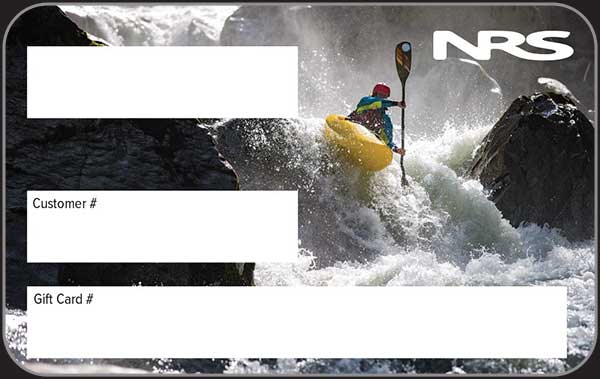 NRS Gift Card: Always Fits, Always Wanted
NRS Gift Card: Always Fits, Always Wanted

